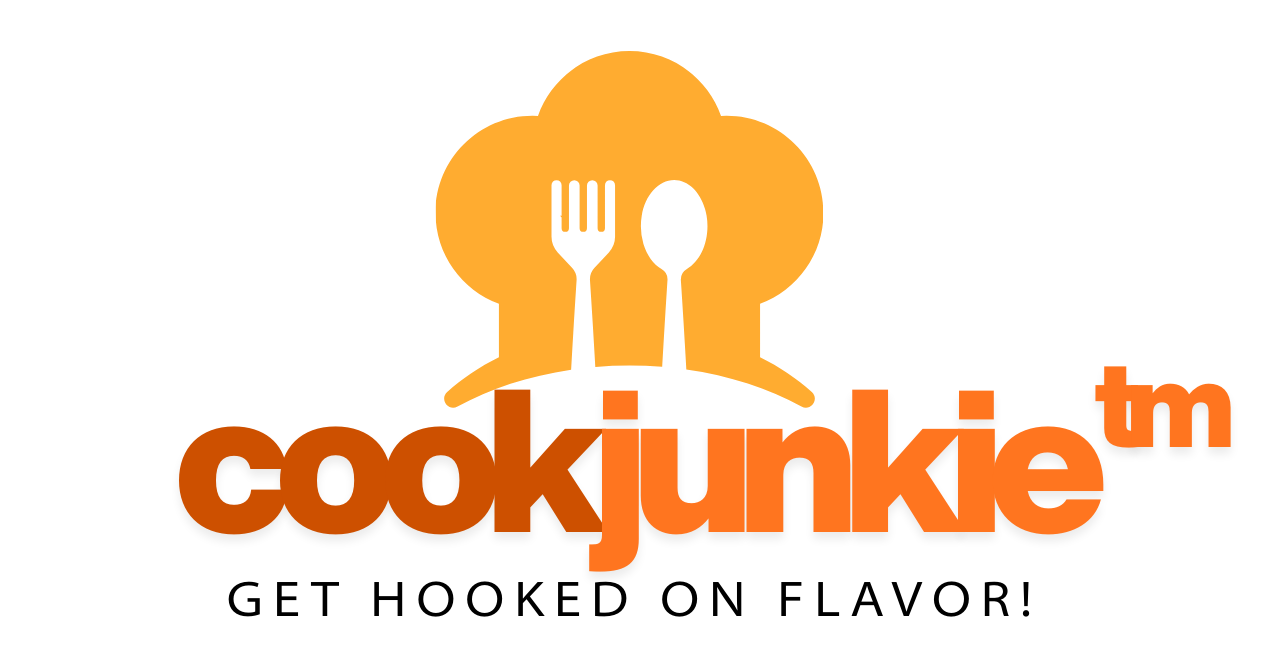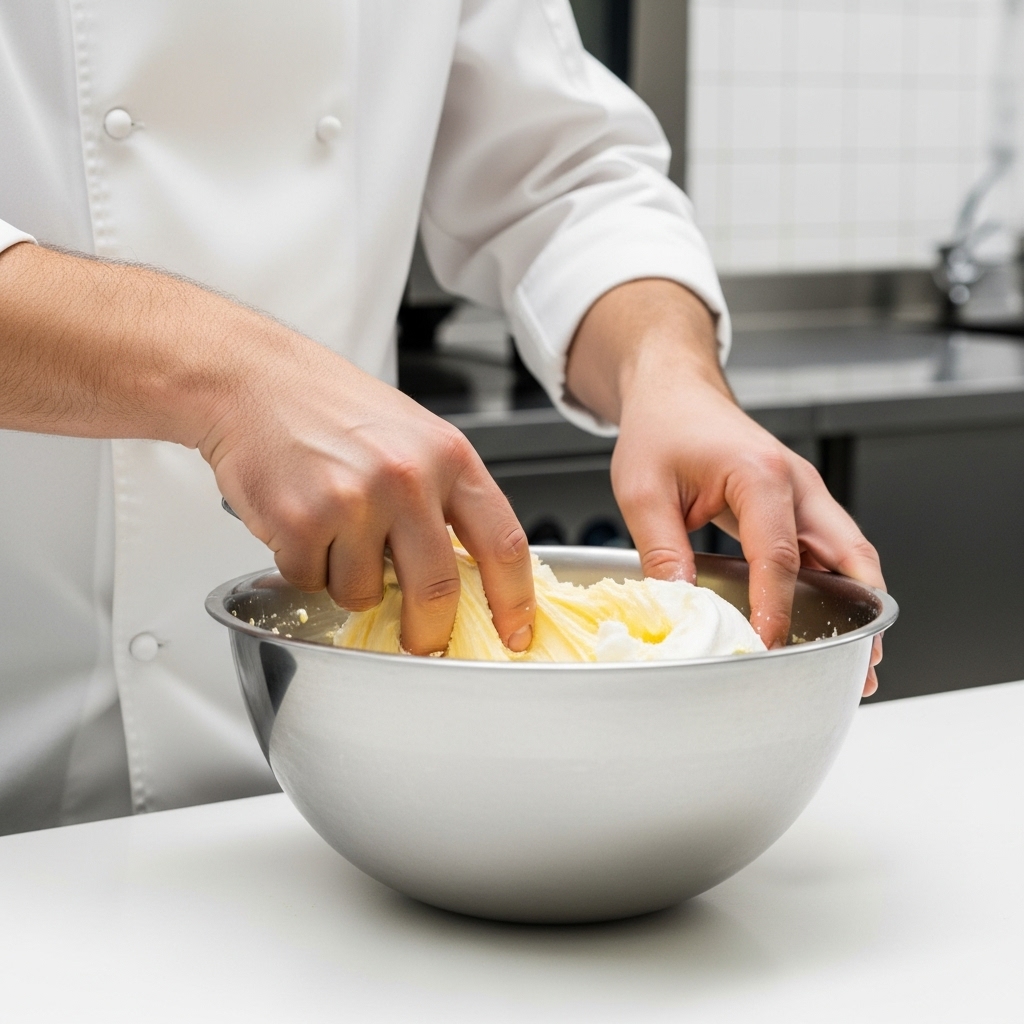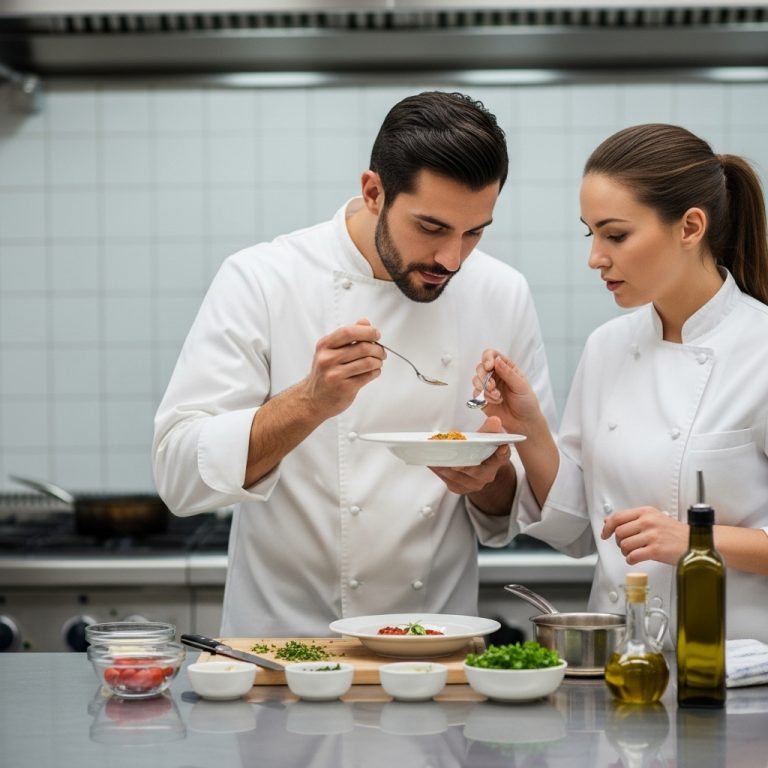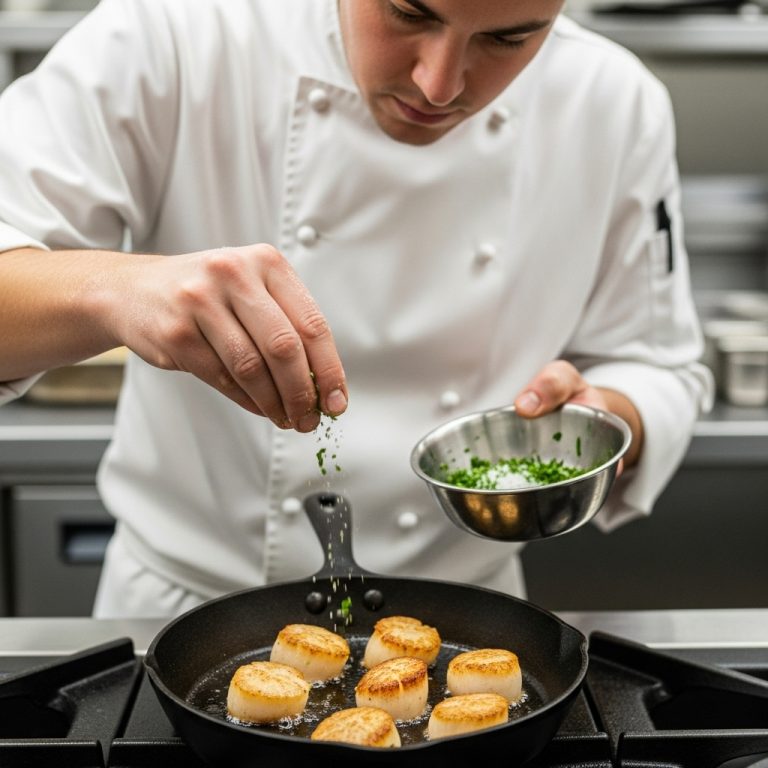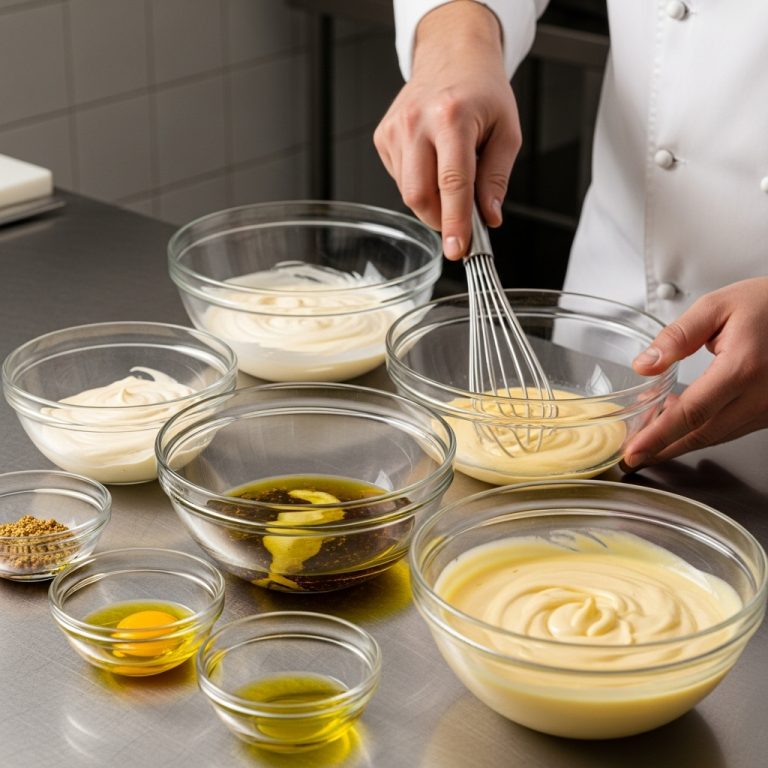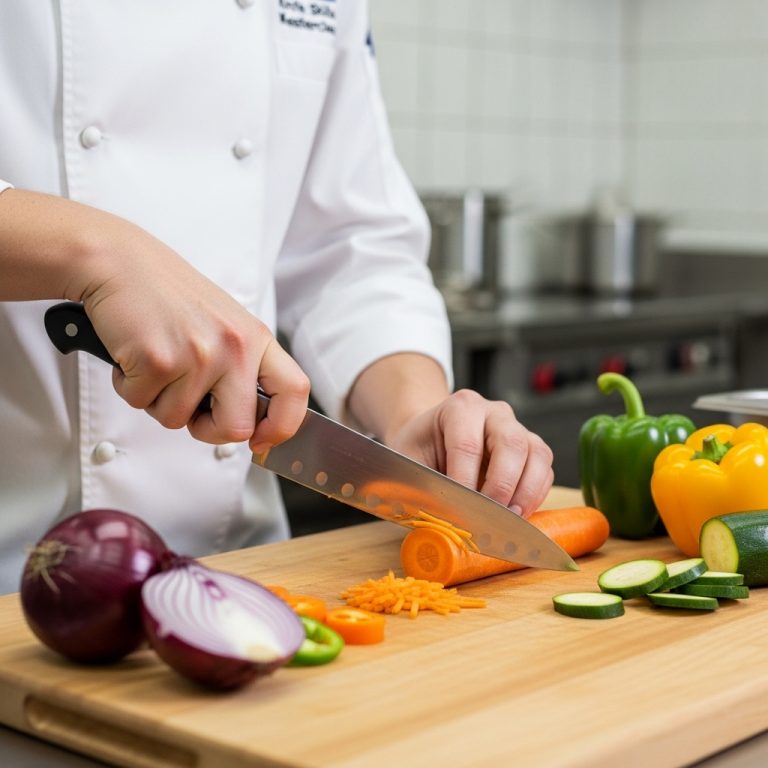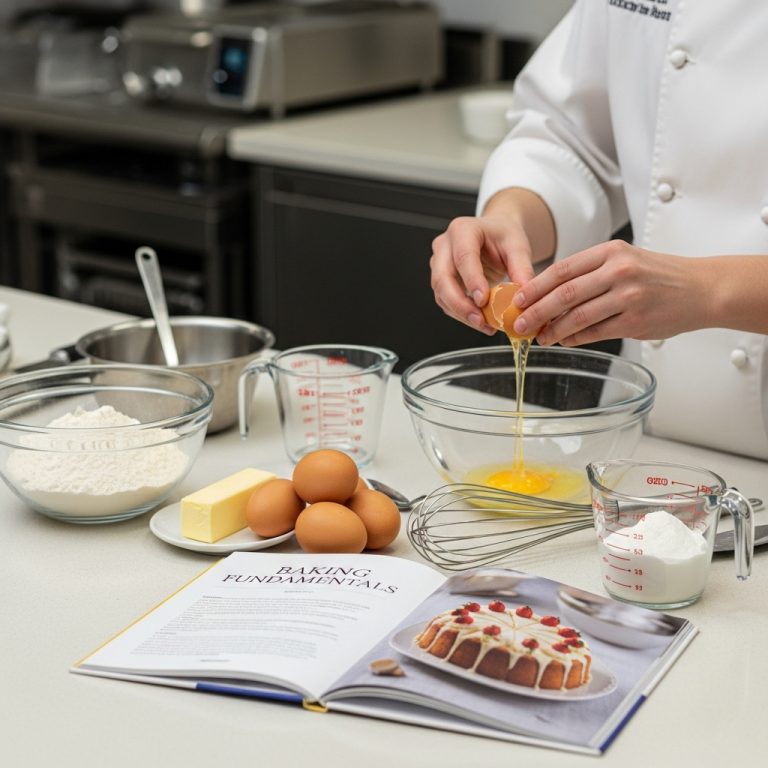Soufflé and Air Incorporation
Lesson Title: Soufflé and Air Incorporation
Objective:
In this lesson, you will learn how to make a classic soufflé and understand the importance of air incorporation in cooking. By the end of this class, you should be able to create a light and fluffy soufflé while mastering the art of air incorporation for various dishes.
Core Concept:
The primary focus of this lesson is on understanding how air incorporation affects the texture and outcome of a dish, particularly in soufflés. Soufflés are known for their lightness and airiness, and these qualities are achieved by careful air incorporation during the cooking process.
Tools & Setup:
1. A mixing bowl
2. A whisk or hand mixer
3. An oven-safe soufflé dish (approximately 6 cups capacity)
4. Measuring spoons and cups
5. Oven mitts
6. A rubber spatula
7. A kitchen towel
8. A baking sheet
9. Parchment paper
10. A timer
Step-by-Step Practical:
1. Preheat your oven to 375°F (190°C).
2. Separate 4 large eggs, placing the whites in a mixing bowl and yolks in another container.
3. In a small saucepan, heat 1 cup of milk until it’s just warm to the touch. Do not let it boil.
4. Pour the warmed milk into the egg yolks and whisk until well combined.
5. Return this mixture to the saucepan and add 1/2 cup sugar, 3 tablespoons unsalted butter, and a pinch of salt. Heat over low heat, stirring constantly, until the butter is melted and the sugar is dissolved. Remove from heat and whisk in 2 tablespoons of all-purpose flour.
6. Continue whisking until the mixture becomes smooth and thickens slightly. This should take about 2 minutes. Remove from heat and whisk in 1 teaspoon vanilla extract and 1 teaspoon lemon zest. Set aside to cool for a few minutes.
7. Using a clean, dry whisk or hand mixer, whip the egg whites until they form stiff peaks. This process should take around 2-3 minutes.
8. Carefully fold the egg whites into the cooled yolk mixture in three additions. Be sure to do this gently and thoroughly after each addition to ensure even incorporation of air.
9. Transfer the mixture to an oven-safe soufflé dish and smooth the top with a rubber spatula. Place the soufflé dish on a baking sheet lined with parchment paper for easy handling.
10. Bake in the preheated oven for 30 minutes, or until the soufflé has risen and is golden brown on top. To test its doneness, give it a gentle shake – if it wobbles slightly but doesn’t move much, it’s ready to come out of the oven.
11. Remove from the oven and serve immediately.
Culinary Science Insight:
Incorporating air into food is crucial for creating lightness and volume. In soufflés, this is achieved by beating egg whites separately before folding them into the rest of the ingredients. The air bubbles trapped in the beaten egg whites expand when heated, causing the soufflé to rise dramatically during baking.
Pro Tips & Variations:
1. To prevent the bowl from slipping while beating egg whites, dampen a kitchen towel and wrap it around the bowl’s bottom.
2. For additional flavor variations, add chocolate, fruit, or spices to your soufflé mixture.
3. Be sure not to overmix or overheat the yolk mixture, as this can deflate the beaten egg whites when combined.
4. When folding the egg whites into the yolk mixture, it’s crucial to do so gently and thoroughly to avoid deflating the air bubbles in the egg whites.
Homework / Practice:
Practice making a soufflé using different flavor combinations. Try adding chocolate, lemon zest, or fresh herbs to the basic recipe. Share your results with fellow class members and discuss any challenges you faced or improvements you noticed.
Reflection:
In this lesson, you’ve learned how air incorporation is essential in cooking, specifically when making a soufflé. By mastering the technique of beating egg whites and folding them into the yolk mixture, you’ve achieved a light and fluffy soufflé that showcases your newfound culinary skill. Keep practicing this method and exploring other dishes where air incorporation plays a crucial role, such as meringues, whipped cream, or even certain types of cakes and sauces.
